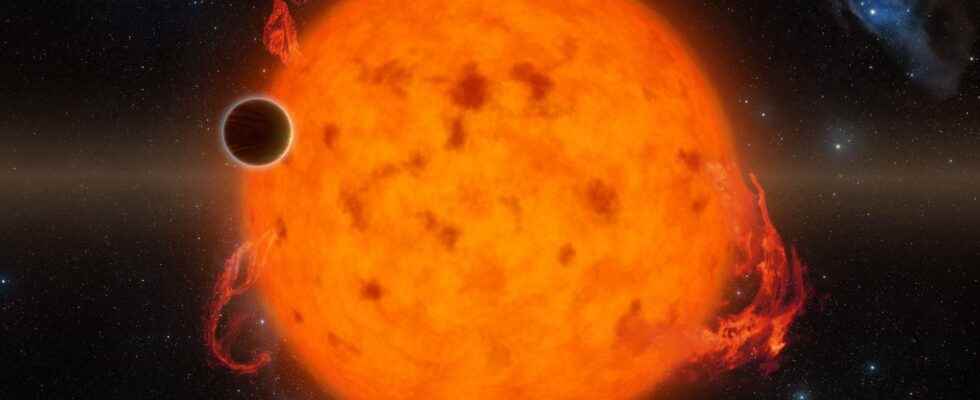A new planet, TOI-2109b, has been discovered orbiting a star about 855 light years away from us. The orbit of this planet is so short that it circles its star in just 16 hours. Scientists expect it to fall into its star within a few million years.
You will also be interested
[EN VIDÉO] Exoplanets What is an exoplanet, where are they found and why are they so interesting? Video response!
On May 13, 2020, telescope spatial Tess (Satellite census of exoplanets in transit) began to observe towards TOI-2109, a star as massive as times and a half our Sun and located at 264 parsecs (around 855 light years) of our Solar system. For nearly a month, the space telescope collected measurements of brightness of the star which were then analyzed by the scientific teams of the Tess.
The transit method to detect exoplanets
Using the transit method, it is possible to determine the presence of an object orbiting around a star by studying the variations in its luminosity: when an object passes between the observer and the star, the measured luminosity of the star decreases slightly. It is this phenomenon that the scientists of Tess observed, motivating them to inform the astronomical community about it to finally allow, thanks to further observations carried out by telescopes on the ground, to confirm the presence of a planet orbiting around YOU. -2109.
By measuring the frequency to which the luminosity measured by the telescope varies, the scientists were able to deduce the period of revolution (time taken for a star to make a complete turn around the center of its orbit) of this planet, and were surprised at their discovery: in just 16 hours, it would complete a complete circle around its star.
An “ultra-hot Jupiter” doomed to fall into its star
With the help of measurements carried out on various wavelengths optical and infrared, the research team was able to deduce the mass and the size of TOI-2109b, five times as massive and 35% larger than Jupiter. It would also orbit at an extremely short distance from its star, around 2.5 million kilometers (for comparison, Mercury, the planet in the Solar System closest to the Sun, is almost 60 million kilometers away from it. ): it is the shortest orbit of all gas giants never observed to date.
Due to its extremely tight orbit, and as with the majority of cases of ” Hot jupiter Known, the planet is in rotation synchronous with its star: it always presents it the same face, thus creating a perpetual day side, and a perpetual night side. According to scientists, at such a short distance from its star, the surface temperature on the day side of this exoplanet is estimated at 3,500 ° C, almost as hot as a small star, making this planet the second hottest. never detected. It is then classified as an “ultra-hot Jupiter”, in comparison with the ” Hot jupiter », Generally farther from their star and therefore cooler.
TOI-2109b’s extremely short orbit leads scientists to believe that it would be doomed to fall into its star within a few million years. According to Ian Wong, lead author of the study, “ in a year or two, if we’re lucky, we may be able to detect how the planet is approaching its star “.
Researchers hope to be able to observe TOI-2109b in the near future with more powerful tools, in particular thanks to space telescopes Hubble and James-Webb, in order to shed light on the conditions that “hot Jupiters” undergo when they fall into their star. Further observations could, moreover, make it possible to understand how a planet as massive as TOI-2109b can reach such a short orbit, a phenomenon which is not observed in our solar system.
Interested in what you just read?
.
fs3
